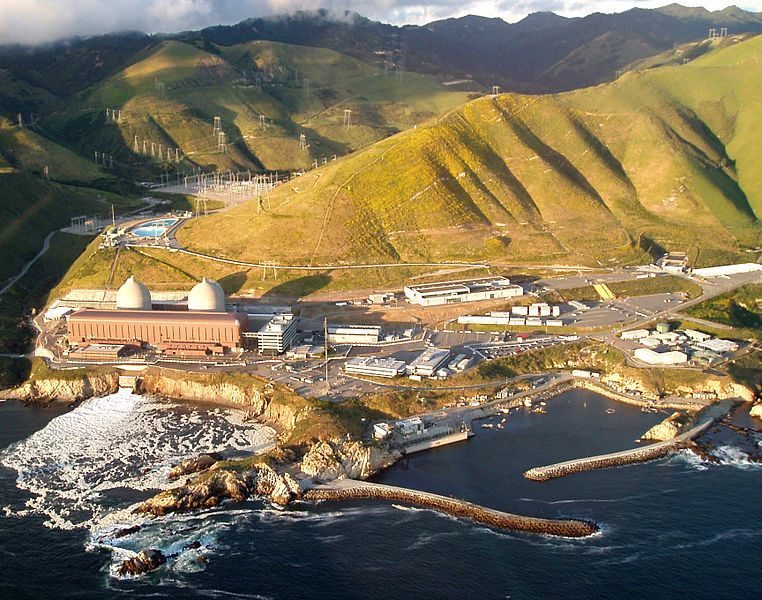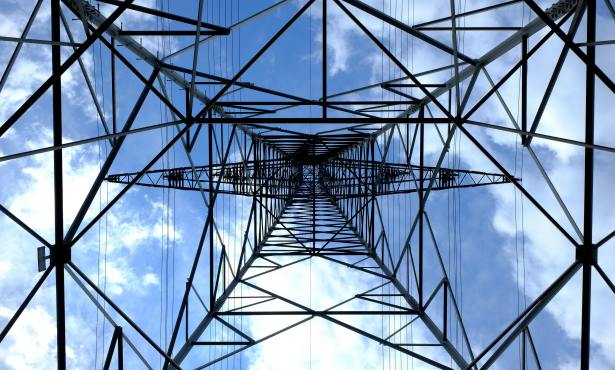All About Diablo Canyon Nuclear Plant
And If You Don’t Know, Now You Know

Absent annoyances like the Alliance for Nuclear Responsibility (A4NR) and allies, it appears that regulators, elected officials, and the press have their COVID-19 facemasks pulled up over their eyes. With no shortage of crises — pandemics, wildfires, social injustice — plaguing 2020 so far, some long-simmering nuclear shortcuts are slipping under the radar.
PG&E, which pled guilty to 84 cases of manslaughter this past spring, has been banking on regulatory inattention to increase profits while ignoring risks to residents and ratepayers from its aging Diablo Canyon nuclear power plant.
Since the start of the pandemic, here are four examples of declining oversight:
(1) Corroded pipes in the vital emergency cooling water system at Unit 2 ruptured in July, spilling four gallons per minute. The plant shut down for a week of repairs — and more extensive corrosion was detected. Fearing that Unit 1 suffered similarly, PG&E asked the Nuclear Regulatory Commission (NRC) for a license to make repairs in place without shutting the reactor down. California’s blackouts mean that the last thing PG&E wants to admit is that Diablo Canyon could fail at the time it might be most needed. Ignoring its own regulatory precedents, failing to wait for PG&E’s responses to staff questions, and skirting public notification and comment requirements, PG&E’s risky request was rubberstamped.
Get the top stories in your inbox by signing up for our daily newsletter, Indy Today.
The Takeaway: Despite decades of NRC requirements and inspection orders to PG&E for documented weaknesses, how was this external — visible — pipe corrosion allowed to fester? Have maintenance standards degraded now that the plant is slated for retirement in a few years … the frightening prospect of what engineers call “run to failure?” What other undetected decay lurks in the system — and what will it cost ratepayers to keep this dinosaur running safely?
For those believing that Diablo Canyon is vital in a time of energy shortages, consider this from the New York Times in August:
Steve Berberich, president and chief executive officer of California Independent System Operator, on Tuesday defended his organization’s decision to order rolling blackouts rather than dipping into reserve power supplies set aside for emergencies. He said the grid had to keep some reserves on hand in case a plant like Diablo Canyon unexpectedly shut down.
Perhaps Mr. Berberich rightly feared — or knew of — the situations plaguing Diablo this summer.
(2). Many customers have fled PG&E for Community Choice Aggregation programs (CCA), but they are still charged “exit fees” to cover Diablo’s extraordinary above-market costs — which PG&E projects will exceed $1.25 billion in 2020. That’s money that could be better spent on the demand-response programs, electricity storage, and targeted capacity purchases needed to truly avoid blackouts. Desperate, PG&E tried to pawn off Diablo’s unneeded and overpriced energy on the CCAs (including Santa Barbara’s own Central Coast Community Energy) under the rubric of “Carbon Free.” But alert advocates caught the ruse and reminded the boards of CCAs across the region to remain true to their past commitments to “nuclear free” power sourcing.
(3) PG&E gained an additional eight months use (and associated profit) from Diablo through an unpublicized waiver from the State Water Resources Control Board (SWRCB). In 2010 the SWRCB ruled that all use of once through cooling (OTC) from ocean water would cease on December 31, 2024. Diablo’s Unit 2 has an NRC license through August 2025.
In a move quite similar to the NRC waiver, the Newsom SWRCB relied on a smokescreen staff report replete with internal contradictions and unsubstantiated claims by PG&E. The waiver was shoehorned into the OTC extensions for several Southern California gas plants. But the Southern California 1-3 year extensions allegedly address a 2021-2023 short-term need. No such claim was made for Diablo’s 2025 gift.
As a result, the SWRCB in a unanimous vote heaped an economic bonus on PG&E and perpetuated damage to our oceans through sea life entrainment. Once, the California Coastal Commission declared, “It would be fair to categorize Diablo Canyon as California’s largest marine predator.” Maybe the SWRCB forgot.
(4) On a final and unsettling note, Forbes magazine investigated NRC files and revealed that unidentified drones have hovered above nearly a dozen nuclear power plants without interception, sometimes for 30 minutes or longer, “…and Diablo Canyon near San Luis Obispo in California had no less than seven separate incidents from December 2015 to September 2018, all of them unresolved.”
The National Academies of Science and Engineering determined that spent fuel pools at nuclear reactors represent their greatest security weakness. Enclosed in buildings lacking thick containment structures, these pools hold the highest volume of radionuclides that could be released. While the perpetrators and motives of the drone flights remains unknown, a drone attack on Diablo’s spent fuel building — even absent an off-site radiological catastrophe — wreaks havoc, requires untold costs to remedy, and stops energy production.
Since 2008 A4NR has been advocating that PG&E expedite the transfer of spent fuel from vulnerable pools into simpler, passive dry cask storage. The California Energy Commission agrees; the CPUC has previously ordered PG&E to begin the process. Instead PG&E drags its feet, after previously deferring all offloads until 2032.
And from the aforementioned state regulatory commissions? Only silence.
As these examples indicate, 2020’s serial disruptions have hampered anyone’s ability to closely monitor utility actions. Undoubtedly these are stress filled days for all, including government agencies and reporters. But existing health, economic and societal concerns could be rendered moot by the greater existential threat posed by Diablo Canyon. The final years of an aging nuclear plant operated by a repeatedly bankrupt and felonious utility are not the time to be letting down one’s guard. While all are told to keep their masks covering their noses, this should not prevent our regulators and the media from sniffing out the unpleasant developments at this accident-waiting-to-happen.
David Weisman is the outreach coordinator at the Alliance for Nuclear Responsibility. Further information and supporting documents for the issues raised here can be found at: www.a4nr.org.
Every day, the staff of the Santa Barbara Independent works hard to sort out truth from rumor and keep you informed of what’s happening across the entire Santa Barbara community. Now there’s a way to directly enable these efforts. Support the Independent by making a direct contribution or with a subscription to Indy+.



